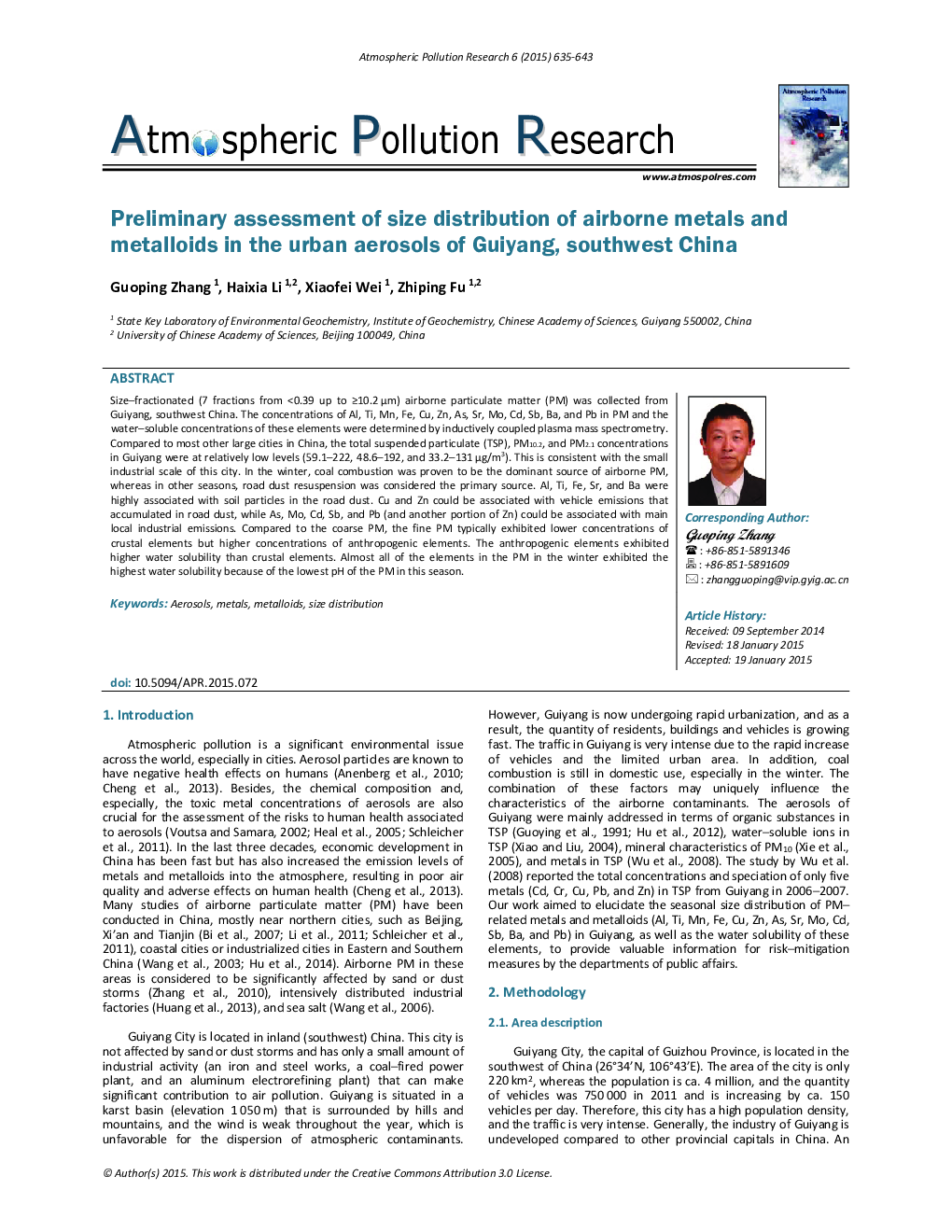| Article ID | Journal | Published Year | Pages | File Type |
|---|---|---|---|---|
| 4434823 | Atmospheric Pollution Research | 2015 | 9 Pages |
Size–fractionated (7 fractions from <0.39 up to ≥10.2 μm) airborne particulate matter (PM) was collected from Guiyang, southwest China. The concentrations of Al, Ti, Mn, Fe, Cu, Zn, As, Sr, Mo, Cd, Sb, Ba, and Pb in PM and the water–soluble concentrations of these elements were determined by inductively coupled plasma mass spectrometry. Compared to most other large cities in China, the total suspended particulate (TSP), PM10.2, and PM2.1 concentrations in Guiyang were at relatively low levels (59.1–222, 48.6–192, and 33.2–131 μg/m3). This is consistent with the small industrial scale of this city. In the winter, coal combustion was proven to be the dominant source of airborne PM, whereas in other seasons, road dust resuspension was considered the primary source. Al, Ti, Fe, Sr, and Ba were highly associated with soil particles in the road dust. Cu and Zn could be associated with vehicle emissions that accumulated in road dust, while As, Mo, Cd, Sb, and Pb (and another portion of Zn) could be associated with main local industrial emissions. Compared to the coarse PM, the fine PM typically exhibited lower concentrations of crustal elements but higher concentrations of anthropogenic elements. The anthropogenic elements exhibited higher water solubility than crustal elements. Almost all of the elements in the PM in the winter exhibited the highest water solubility because of the lowest pH of the PM in this season.
